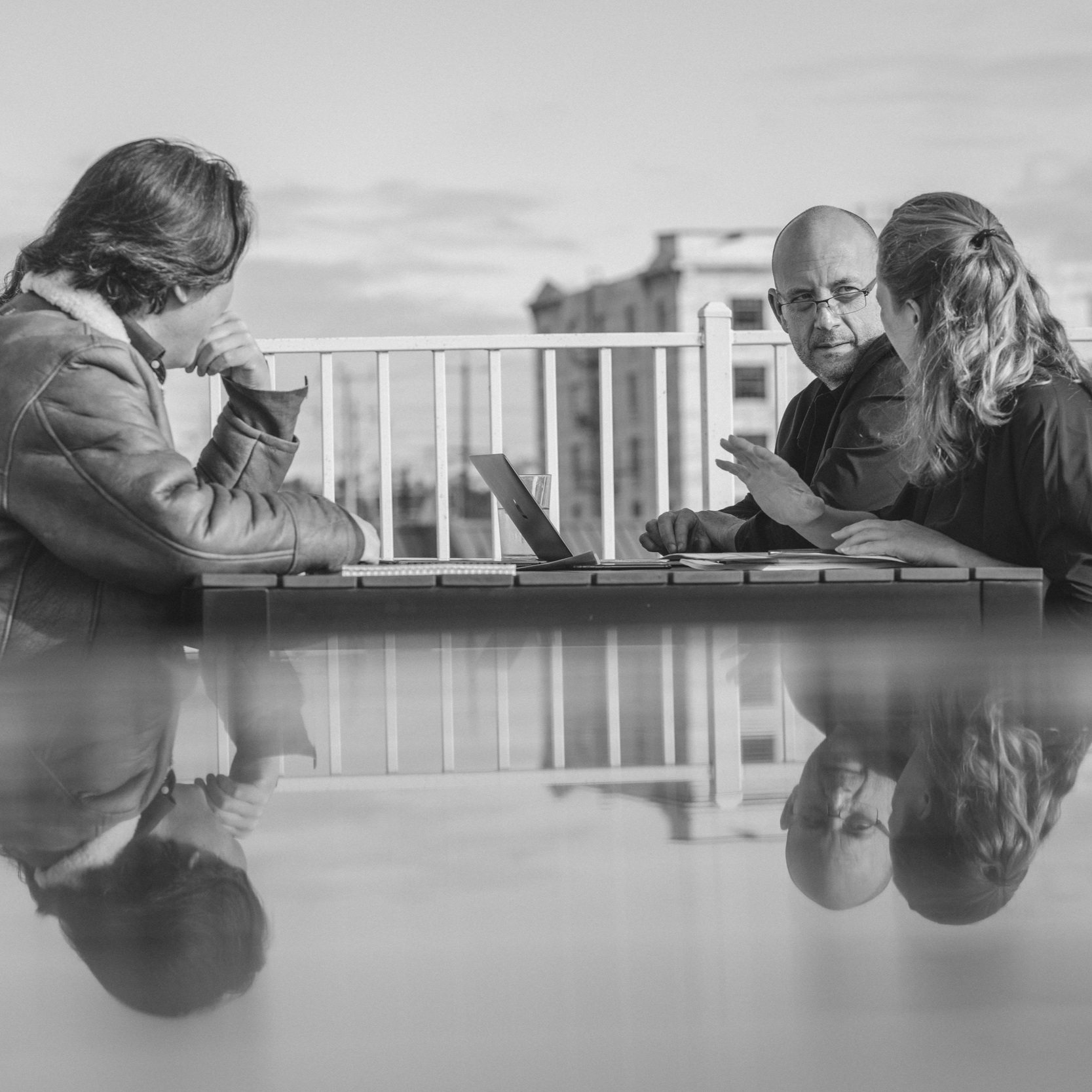Who We Are
designing landscapes and social spaces that foster resilience, vitality, and equity
At STOSS, we design landscapes and social spaces that foster resiliency, vitality, social equity, environmental health, and community. By breathing new life into abandoned, neglected, or simply timeworn places, informed and intentional design can bring neighborhoods, institutions, and entire cities to value safer, healthier, and more beautiful public spaces, to be inspired and sense renewed pride and hope in their community.
Since the studio’s founding in 2001, we have worked on tough and complicated sites, from flooding waterfronts, to underserved neighborhoods, deserted downtowns, or neglected brownfields. Whether designing a complex coastal resiliency master plan or an urban pocket park, we ground our design in research, and seek to transform people’s experiences with new or hybrid applications for technologies, infrastructures and ecologies. Through deep research and robust public engagement about the historical context and culture of each site, we create public spaces that resonate uniquely with their public and their place, which encourages new use and attentive care. This approach embeds in the design a conscious effort to bridge gaps in social and environmental equity.
We imagine new possibilities, creating value and beauty in challenging places while never losing sight of how we can inspire social connection and bolster diversity, equity, and inclusion.
Our efforts have garnered numerous awards from our peers and the public including a Cooper-Hewitt National Design Award and the Topos International Landscape Award. STOSS has also published three monographs that express our philosophy about the responsibility of design in cities today.
THE POWER OF OPEN SPACE TO BIND COMMUNITIES TO ONE ANOTHER AND TO THE ENVIRONMENT IS UNEQUIVOCAL. THE ROLE OF OPEN SPACE IS ESSENTIAL IN A WORLD OF SOCIAL AND RACIAL INEQUITY AND ENVIRONMENTAL DEGRADATION.
20 years ago, we were pioneers as landscape urbanists; we believed that cities and public spaces could be more livable and healthier if they were designed around landscape systems and ecological processes. This involved reimagining the leftovers of industrial and infrastructural and urban pasts as multi-functional, vibrant landscape infrastructures and city districts that could serve environmental, social, cultural, and economic ends simultaneously. Today, we are proud to have witnessed the impact of this philosophy on the growth of cities: landscape and public spaces have been the focus of urban regenerations worldwide, driven by, and sometimes reactive to, public health, resiliency, and ecological mandates.
But there is more work to do. No longer do we have to ask how can landscape become part of a city, but WITH WHOM, FOR WHOM, and FOR WHAT can landscape be put in service? Landscape is not the savior, but it can play an important role in addressing our current environmental crises–climate change and biodiversity loss–as well as pressing urban issues of equity, the unhoused, displacement, public health, and the disproportionate impacts of climate change on vulnerable communities.
Today’s world requires an activist, optimistic and inclusive approach to landscape as an agent of positive change. In cities. Across the planet. And in the daily lives of people. This is our mission.
LANDSCAPE HAS THE POWER TO INSTIGATE POSITIVE CHANGE.
Socially
The process of landscape and urban planning has the capacity to take on racial equity and environmental justice issues, and to forge new social and cultural models. By decisively engaging with the voices and perspectives of those who are disadvantaged, vulnerable, marginalized and have been the victims of disinvestment in the past, we can expose what is most needed on a project. The ensuing intentional programming ensures their needs are served and that the space reflects them, which increases everyday use of the space, creates a sense of community ownership, and ensures everyone feels welcome. We seek clients who understand and feel the responsibility we all hold in creating public spaces of equity and diversity to make socially healthy cities.
Environmentally
Landscapes are active environs of work, always in the process of making or unmaking, and can themselves instigate response and change. Consider how trees, plants and other living things grow; how oceans and rivers rise and fall, and occasionally flood; how weather intensifies and ebbs; how cliffs erode while beaches are built and rebuilt; how ecosystems adapt. We can leverage the inherent functions and beauty of landscape, through creating more biologically diverse and healthy cities; cleansing water, soil, and air; mitigating climate change and reducing its negative effects; and by bringing joy and beauty into the everyday lives of people. We seek clients who believe in proactively re-shaping the environment, cities, sites, and the earth itself–for all creatures, and for all living things.
Culturally
Ideas move people, cities, societies; ideas offer hope and inspiration, and spark imagination. Ideas both ground our work and tie it to larger cultural projects, like those of fine arts and architecture. The power of ideas is to open minds to different ways of seeing, to different ways of knowing, to different ways of imagining what could be. By leaning into landscape’s cultural project, we can help unearth and support new identities, new voices; can shift perspectives to include those of people and ideas and traditions unlike ourselves; can beautifully and impactfully transform the look and function of environments; and can connect with people in ways that enrich lives. We seek clients who believe in the power of ideas and the imagination, who wish to embark on a journey of exploration and discovery, who want to imagine new futures and new possibilities.














